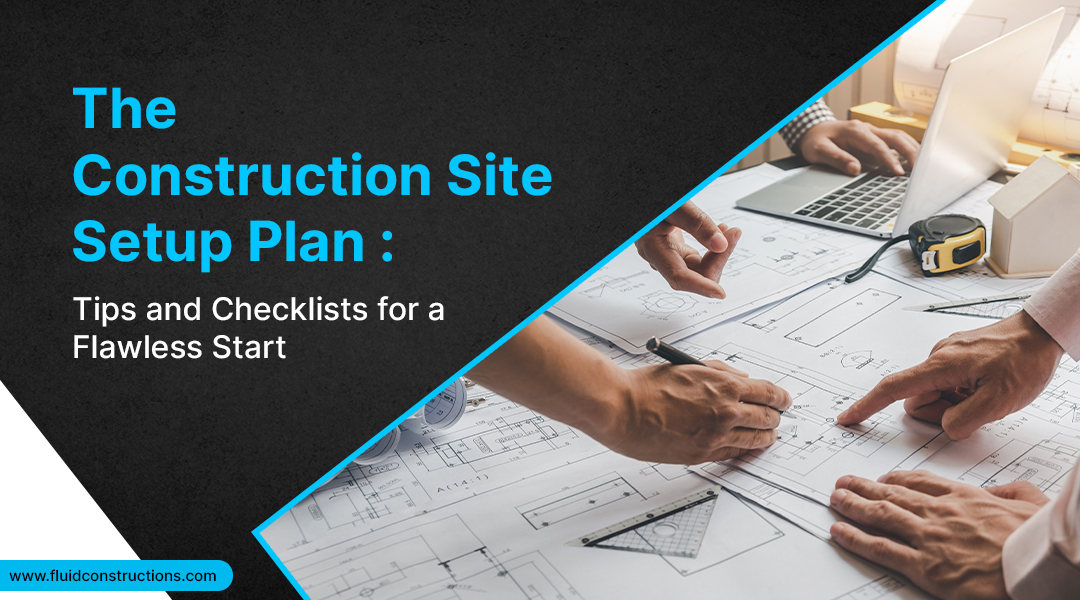
The Construction Site Setup Plan : Tips and Checklist
We all know how important site surveying, soil testing, and site planning are for the success of a construction project, but we often discount the role of the site office setup in that success. A site setup is like a control room bustling with actions like planning, designing, strategizing, monitoring, last-minute changes, etc. that describe a busy construction site. So what constitutes an effective construction site setup plan? Find out from this comprehensive checklist before you select your next construction site.
In the fast-paced world of construction, having an efficient and well-organized site office is crucial to the success of any project. Located right next to the main site, this is where all actions start before their execution. It allows construction professionals to talk to each other, get project updates, resolve issues, and make decisions quickly and easily.
That makes it necessary for a construction site setup plan to enable seamless communication between project managers, supervisors, architects, and other stakeholders, acting as a centralized hub. With a busy and effective site office, a construction project can reap a multitude of benefits, including increased productivity, improved communication, and enhanced safety.
Construction Site Setup Plan Checklist
- Set up your site office for those who will use it most
Who will use an on-site office? The project management team as a whole, engineers, and site supervisors are the main people to be accommodated. You might want to think about whether the team can share space or if the different individuals would require their own space.
If it’s a large and long-term project, it’s critical that you provide the experts working on your project with enough room to do their jobs. This may indicate that in order to adequately accommodate your workforce, you will need to build a larger office space or additional office units.
- Make it cozy
What will sustain the productivity of your project management team? Don’t undervalue the advantages of having a cozy workspace. Employees are frequently more willing to start and continue working on a project when they feel at ease in their surroundings, which benefits the project as a whole.
Make sure your organization prioritizes the general condition of the office unit and that you have the right office furniture, supplies, and climate control to create a comfortable workspace. Even in the middle of a hectic workplace, your office design can offer a more sedate and calm workspace.
- Ensure health and safety measures at the site
Observe general safety basics such as construction site risk assessment and other walk-throughs for construction risks related to fire, electrical, physical, and chemical hazards. These exercises will help workers recognize common construction hazards, their risk severity and rating, and suggest control measures. Implement the following construction safety rules:
- Workers must always wear PPE
- Workers must use and follow safety signs
- New workers must go through site induction to become familiar with the site operations and instructions.
- Conduct drills for emergency response preparedness.
- Ensure compliance with fire safety standards and protocols.
- Identify general workplace safety and health hazards.
- Ensure the use of the right equipment for a task
- Proper storing and checking of tools and equipment
- Ensure placing barriers, fencing, and safeguards to isolate workers from going near the hazardous areas.
- Ensure fall protection measures are in place
- Report issues or potential problems immediately to the concerned authorities.
- Maintain the statutory health and safety documents
When conducting a site audit, construction health and safety advisers will consider how well the site office is set up and whether the paperwork is in order. These records provide documentation of what was done and when.
Paperwork and documentation are essential for more than just ensuring regulatory compliance. They provide your staff with information that will help them work safely. They also provide a record of the processes and safety inspections that have been implemented.
Following is the list of health and safety documents that must be available in a construction site office:
- CDM Documents
- Risk Assessments
- Method Statements
- COSHH Assessments
- Training Records
- Fire & Emergency Documents
- Permits to Work
- Site Register
- Equipment Logs
- Accident Records
- Policies & Procedures
- Information to display
The following vital information must be made clearly visible on the site’s office walls:
- Notice Board
- Health and Safety Law Poster
- Insurance Certificates
- Fire & Emergency Plan
- Traffic Management Plan
- Safety Signage
- F10 Notification
- Additional safety documents to be made available
- Worksite Hazard Assessment.
- Personal Protective Equipment (PPE) Guidelines.
- Emergency Evacuation Plans.
- Fall Protection Measures
Conclusion
A construction site office is usually a temporary setup or office located in the construction site that makes workplaces for the concerned people to facilitate and control the construction activities along with the management of security, health, and safety activities in the site. A construction site office includes an office setup, storage area, meeting rooms, toilets, parking area, and optional kitchen.
